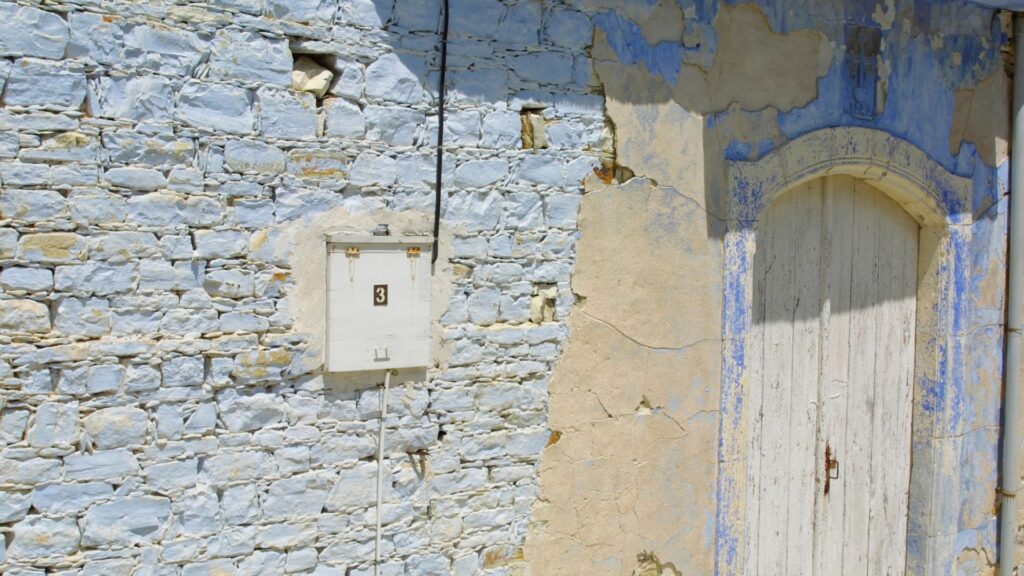A Comprehensive Guide to Safely Remove Paint from Stone Surfaces

Paint can add vibrancy and beauty to any surface, but unwanted paint can be a real eyesore when it comes to stone walls and surfaces.
Whether you’re dealing with accidental splatters, old layers of peeling paint, or a DIY project gone wrong, it’s important to know how to effectively remove paint from stone without causing damage.
In this guide, we’ll explore the reasons you may need to remove paint from stone walls, the challenges involved, and the best techniques to achieve a successful paint removal without compromising the integrity of the stone.
Why Would You Need to Remove Paint From Stone Walls?
You might need to remove paint from stone walls or surfaces for several reasons.
It could be due to a previous owner’s design choices that don’t align with your aesthetic vision, accidental spills during a renovation, or to restore the natural beauty of the stone.
Whatever the case may be, removing the paint can help revive the original charm of the stone and give it a fresh, clean appearance.
Is It Easy to Remove Paint From Stone?
While removing paint from stone walls may seem daunting, it is certainly possible with the right approach.
Stone surfaces have unique characteristics that require careful consideration to avoid damage.
Unlike other materials, stone is porous and can absorb paint, making removing it challenging without causing harm.
However, with the right tools, techniques, and patience, you can achieve successful paint removal without compromising the integrity of the stone.
Do Exterior Paints Contain Lead?
It’s essential to be aware of the potential presence of lead in older exterior paints.
Lead-based paints were commonly used before regulations restricted their use due to health concerns.
If your stone walls or surfaces were painted many years ago, there’s a possibility that the paint contains lead.
In such cases, taking extra precautions during the paint removal process is crucial to minimise any health risks associated with lead exposure.
Consider contacting professionals who have expertise in lead paint removal or consult with a certified lead inspector to assess the situation accurately.
What Are the Risks of Removing Paint Yourself?
While DIY paint removal from stone walls may seem cost-effective, it’s essential to understand the risks involved.
You may inadvertently damage the stone or spread lead-contaminated dust if done incorrectly.
Some common risks associated with DIY paint removal on stone surfaces include the following:
Stone Damage
Harsh scraping or the use of abrasive materials can scratch, etch, or chip the stone surface, leading to permanent damage.
Chemical Reactions
Certain chemical paint strippers may react adversely with the stone, causing discolouration or even deterioration.
Lead Exposure
If the paint contains lead, improper removal techniques can generate toxic lead dust, which poses health risks, especially for children and pregnant women.
Inadequate Preparation
Without proper knowledge and preparation, it’s easy to underestimate the time, effort, and expertise required for successful paint removal.
How Professionals Remove Paint From Stone Walls & Surfaces
To ensure the safe and effective removal of paint from stone walls, it’s often advisable to seek the expertise of professionals specialising in stone restoration.
These professionals have the necessary tools, knowledge, and experience to handle the unique challenges posed by stone surfaces. Here’s a general overview of the steps professionals may take:
Assessment
Professionals begin by examining the stone and assessing the type of paint, its age, and the presence of lead. This evaluation helps them determine the best approach for removal.
Surface Preparation
The stone surface is carefully cleaned and prepared for paint removal. This may involve removing any loose debris, dirt, or contaminants to ensure better adhesion of subsequent removal products.
Paint Removal Techniques
Various techniques can be employed depending on the specific needs of the project. Professionals may use methods such as chemical paint strippers, poultices, heat guns, or low-pressure water blasting to remove the paint layer by layer.
Detailing and Cleaning
Once the paint is removed, professionals meticulously clean the stone surface, paying attention to any remaining residue or stains.
Restoration and Protection
The stone may require restoration after the paint removal process, including resealing or repointing if necessary. Professionals ensure that the stone’s original aesthetics and integrity are restored.
Conclusion
Removing paint from stone walls and surfaces requires careful consideration and expertise to avoid damage.
While DIY methods can be tempting, it’s essential to recognise the risks involved, particularly when dealing with lead-based paints.
To ensure a safe and successful paint removal without compromising the beauty and durability of the stone, it’s advisable to seek the assistance of professionals who specialise in stone restoration.
By doing so, you can achieve a paint-free stone surface that enhances the overall aesthetics of your space while preserving its natural charm.
Find out more about Vinci’s Response professional stone cleaning services.